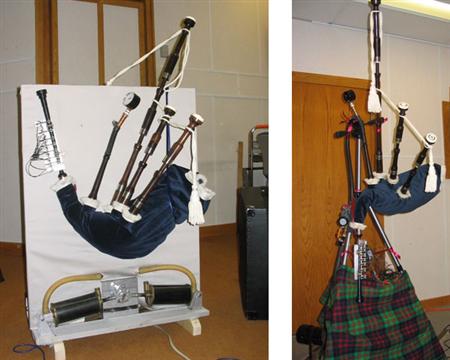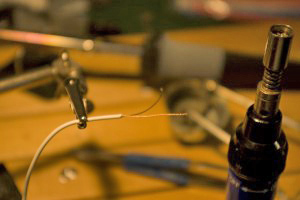
Reader, [Lennon Luks] made a really slick MIDI sequencer/controller for his senior design project while studying at Western Carolina University. It has a grid of 64 LED buttons, 8 knobs, and a display with navigation buttons that allow him to sequence tracks with or without a computer. The controller is based off an ATmega644 and is programmed in C. [Lennon] clearly explains the inner workings of the project in detail on his website and has included a good number of pictures. [Lennon] made a nice video of the project which can be seen after the jump.















